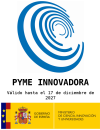Indaga Solar, innovation for a smart and digital management of photovoltaic plants
The photovoltaic industry is, without a doubt, one of the major players in the necessary energy transition, both at national and European level. Its great sustained growth among generation technologies (and the forecast for further growth in the future) make it a sector in which the search for innovation and the digitalisation of processes is a priority in order to maintain competitiveness while increasing social and economic benefits. In this context, the Indaga Solar project (Digital Innovation for the Advanced Management of large Photovoltaic Solar plants) was born.
What is the Indaga Solar project?
Indaga Solar is an R&D project that arises from the need for innovation in this sector, but taking into account that these processes, at these levels, require a lot of time, investment and shared knowledge. The participation of different companies, technological specialization niches and public funding is therefore essential.
Indaga Solar is coordinated by Solartys, a solar energy cluster, with the support of Smartech Cluster and the participation of Skylife Engineering, Infaimon, Instituto de Sistemas Fotovoltaicos de Concentración (ISFOC) and Logikers.
The aim of this ambitious industrial research project is to digitize and transform the operation and maintenance processes that are currently carried out manually. To this end, the possible application of emerging Industry 4.0 technologies such as the digital twin, cloud processing, artificial intelligence, distributed IoT industrial sensors, artificial vision and energy prediction algorithms, among others, are being studied, all of which are perfectly applicable and can be integrated into the operations of the photovoltaic sector. Of all the technologies applied, the aim will be to locate those for which the greatest potential for improvement, effectiveness and profitability has been identified.
Progress achieved in the Indaga Solar project
After an initial phase of analysis of the sector's needs and research into Industry 4.0 technologies applicable to the operation and maintenance of photovoltaic plants, the possible innovations with the greatest potential have been identified and integrated for their evaluation and final development at ISFOC's facilities.
Integral monitoring of the photovoltaic plant
The design and deployment of a network of IIoT sensors capable of collecting data on both production and operation of the photovoltaic systems has been carried out. These sensors have been integrated with data from additional devices such as weather stations or cleaning sensors. In addition, access to all data from the SCADA system has been achieved. The collected information is reported to the central system for processing.
Fault detection and classification through artificial vision
Thanks to a thermographic camera and a camera in the visible spectrum (whose images are processed through vision techniques, artificial intelligence and Deep Learning), various problems are detected even before they have a direct effect on photovoltaic production: hot spots, accumulation of dirt, cell breakage, among others.
Short- and long-term solar resource prediction
By means of a sky camera located at ISFOC's facilities that enables the analysis of cloud progression, information from the IIoT sensor network and the integration of OpenData portals, the system enables the estimation of meteorological information, which is key to optimizing the use of solar resources, as well as the management of maintenance operations on the plant itself.
Decision support system
Centralized software platform that allows the orchestration, interpretation and visualisation of data together with decision support modules (DDS) based on cloud computing and artificial intelligence. This system seeks to optimize and automate the interventions to be carried out in the plant, as well as the ideal timing of maintenance processes.
For more information on the Indaga Solar project, you can consult the extended article in the following link: Read here.




















